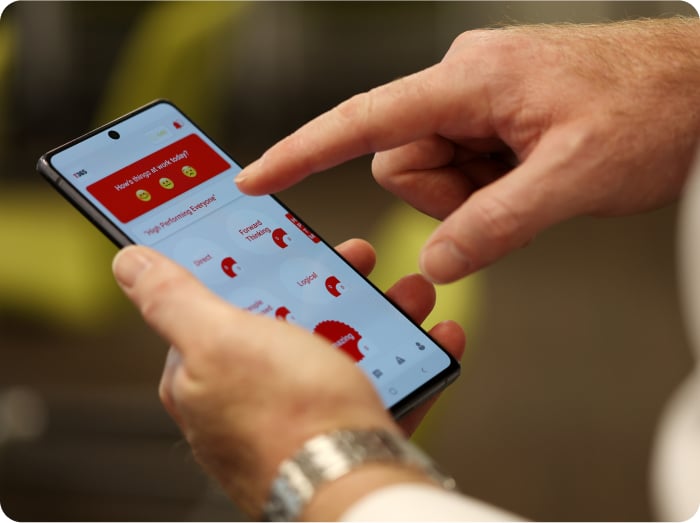
The Tribe365® culture structure is a way of categorising the underlying culture structure of an environment. The Tribe365®culture structure is defined by assessing yourself against two main characteristics:
A uniform vision in a team or organisation means that there is a singular understanding of why everyone has come together and remains together. There is a clear binding force. This can be an individual or group of individuals who have brought people together and everyone is waiting for the next instruction, or it can be a pre-defined cause that binds people together.
A team/organisation wide binding purpose/vision has often been proven to unite teams in language, behaviours and performance. Amongst other things this creates stronger brand identity and loyalty.
Autonomy alone doesn’t have much bearing on performance in teams, there has to be the presence of a purpose to deliver something. If not you have an autonomy to do anything you like when you want, this has no clear benefit to an team/organisation environment. This is why we talk about Purpose Lead Autonomy
Individuals with increased autonomy deliver higher performance, innovation, problem solving and proactivity. Amongst other things this leads to greater staff and customer experiences and greater performance.
We have 4 summary ways of viewing culture structure types. Most environments are a mixture of a little of each of the 4 types, however there is usually a dominating type which is useful understanding for teams to structure plans to move towards where they want to be. Let’s look at the 4 types: People, Power, Role and Collaborative

People will exist in a group with nothing binding them together more than they work under one banner.
People will exist with their own attributes and skills to do as they see fit. There is low conformity of how things are done between team members.

Low, recruit and see what happens

In power structures people will exist in a group with a centrally binding power. This, more often than not, manifests in the power in an individual or a group of individuals.
There is typically less autonomy in a Power Structure. Team Members conform and get what they are asked/directed/told to do done.

Medium, it relies on strong influence usually delivered by individuals. These individuals are human and require energy to maintain their positions. It is easier to maintain a Power culture than a collaborative culture, it requires finding the right person/people to lead from the front and relying on them. It is more demanding maintaining a Power culture than a people culture structure as you have to find the right “Leaders” that will drive performance in everyone else and conform to pre-existing structure. As “Leaders” lose their energy and influence team members drift back to “People” culture where there is little clarity of why everyone is there in the first place and people do their own thing.

In Role Culture structures people will exist within organisations/teams with a low binding power to all other teams and departments within the same organisation.
In role structures people will have a high an increased sense of their role purpose and will have the freedom to get on with what they have been brought in for.

Medium, it relies on finding people with strong role based skills and passion to build on those roles and skills. It is easier to maintain “Role” than a “Collaborative” culture. It is harder to maintain “Role” than a “People” culture because you have to find the right people with passion in their roles. In “Role” dominant cultures it is very typical to drift to “Power” culture within individual teams. Teams develop influencers and the focus becomes more on them and as reduced passion in the role develops individuals conform to the way things are done within their direct team.

There is a centrally binding Vision which everyone is aware of and believes in.
Everyone is driven to be as autonomous as possible whilst aligning to the centrally driven vision.

Maintaining a collaborative culture relies on only having team members who 100% believe in the team/organisation vision and recognise the importance of every structure whilst also having the autonomy to deliver. The vision and structure, as with life, will constantly evolve and keeping on top of that and defined behaviours is a constant/daily activity. Maintaining collaborative culture is a daily activity.

The short answer is moving towards a “Collaborative” culture requires high levels of:
Each one of these spaces, once active, needs daily focus to ensure it is where it needs to be. We would suggest rolling out each area iteratively and focusing on Honesty and Balance together and first. Before starting any activity you must have globally prioritised the shift towards a “Collaborative” culture so all your teams understand and are on board.
The progression through each stage is dictated by team comfort and the prevalence of the behaviours. There is no point progressing to involvement with structure until honesty and balance have been implemented etc.
Ok so at Tribe365® we have been looking at all of this since 2016. We have developed a pathway and an app to support the pathway to “Collaborative” culture. The app sits with each individual team member and coaches individuals, teams and organisations to achieve collaborative culture environments.
If you want the pathway for free do reach out to team@tribe365.co and we’ll happily send it over.
If you want the app, removing any complexity and speeding up the shift towards a 100% “Collaborative” culture environment we charge £4/team member/month and it includes everything needed to shift towards a collaborative culture and maintain it. It includes individual coaching as well as all the stats and data to support teams making the move.
Of course if none of this is what you are looking for and you just find our material do join our community by clicking the side button.
Speak to us today to start the journey towards happier and higher performing teams
For any queries feel free to call us.
+44 (0) 1325 734 847
Alternatively, submit a query and we’ll follow up